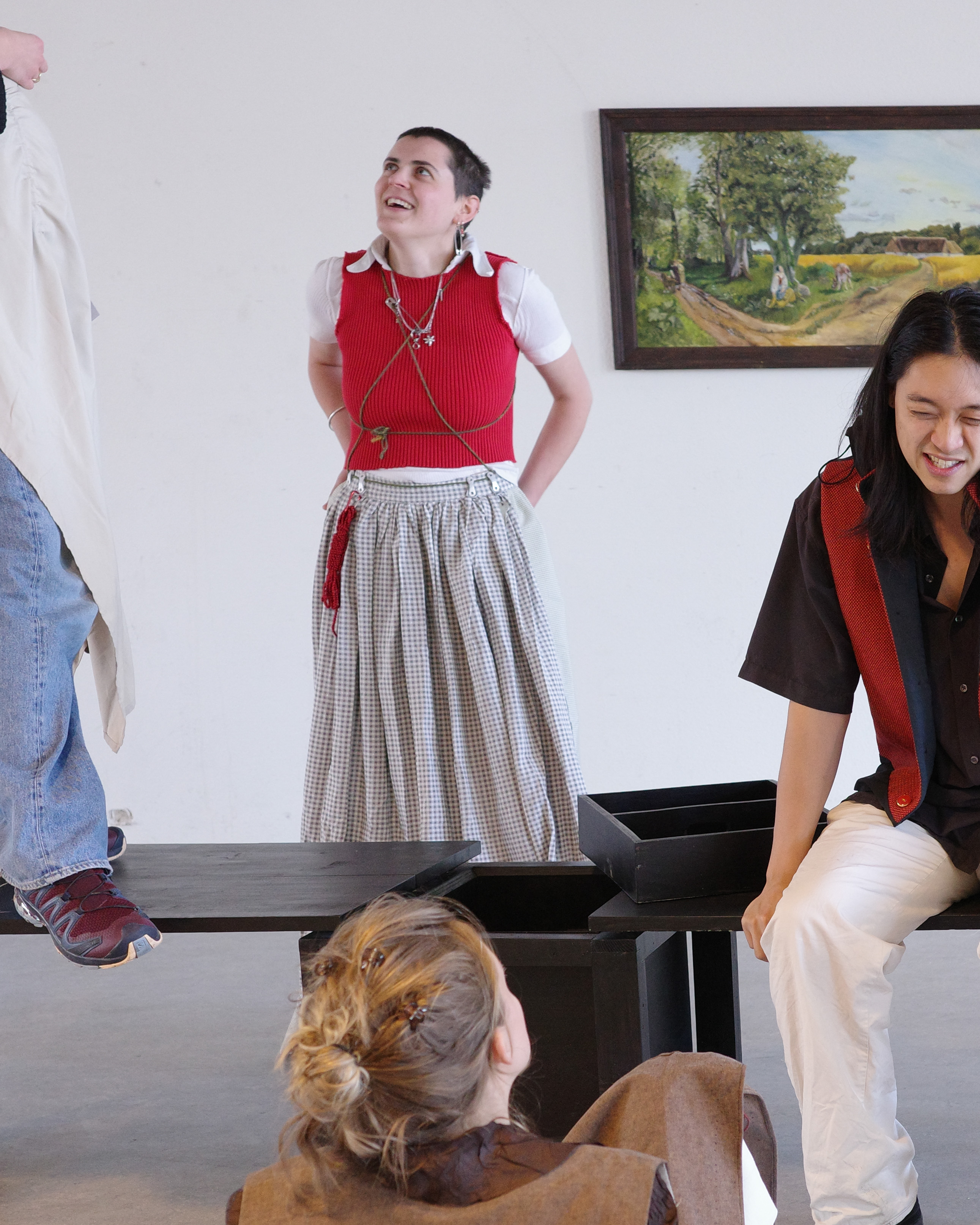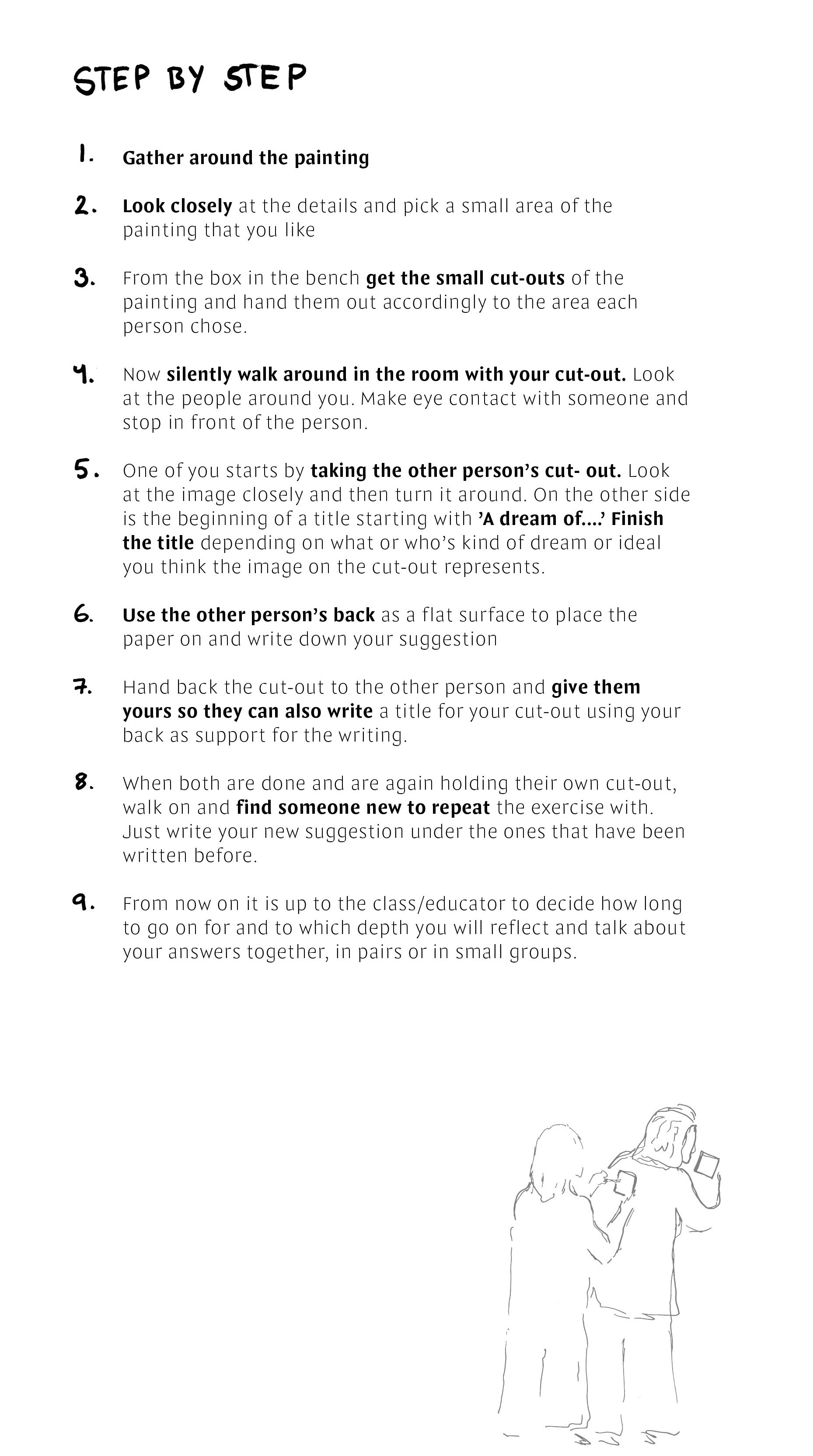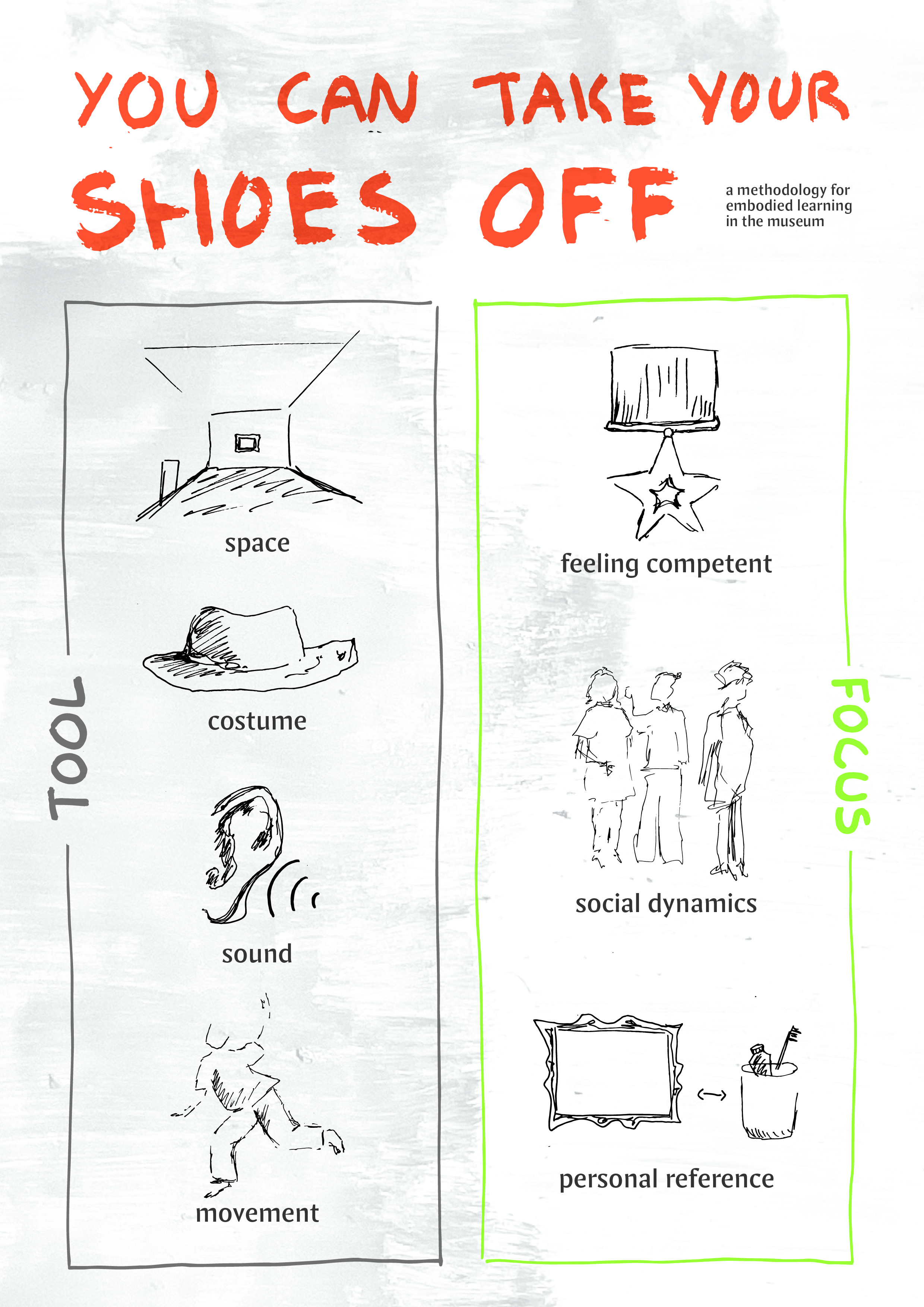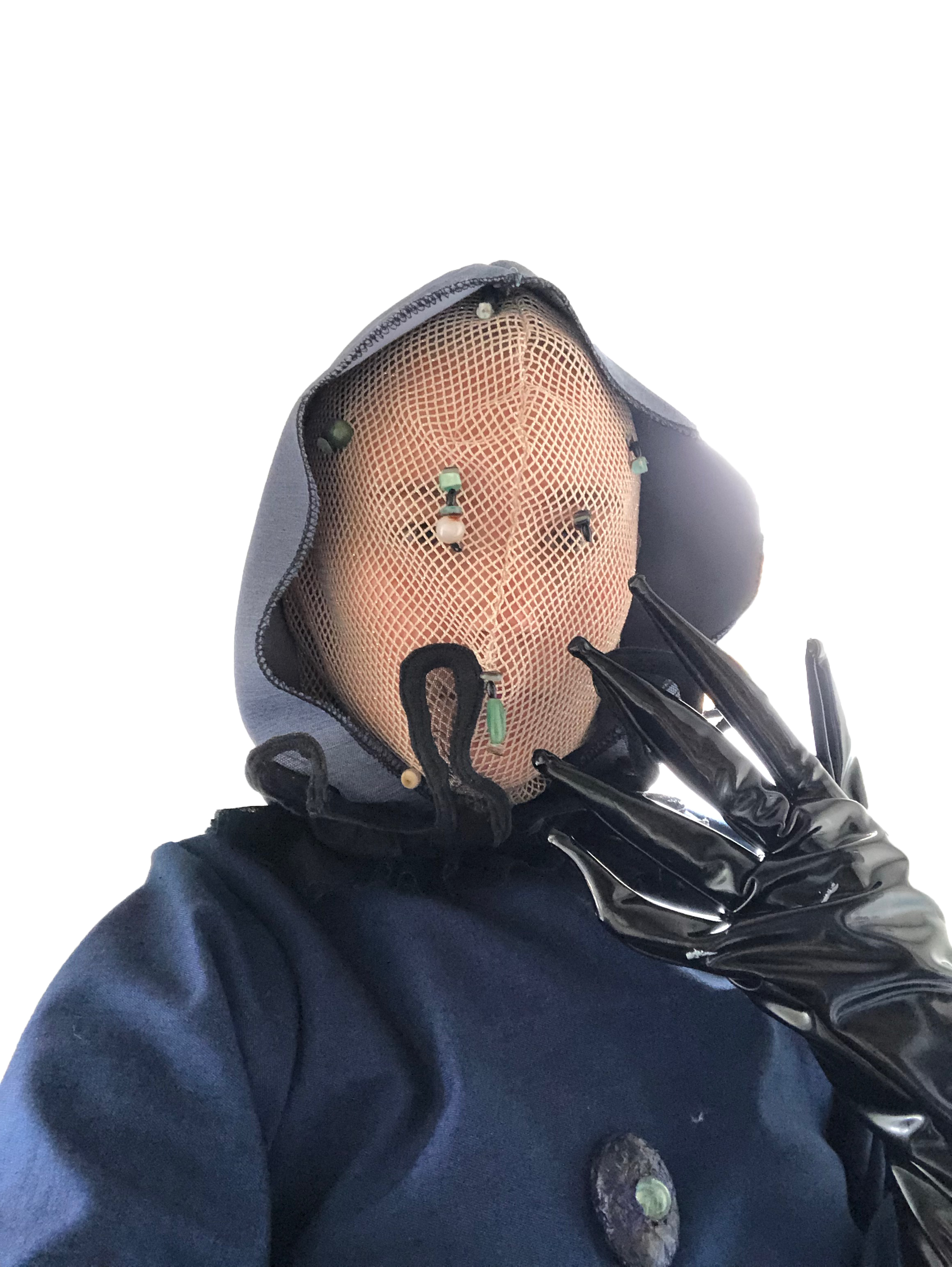

INTRODUCTION
”you can take your shoes off” is a methodology that investigates how embodied- and social approaches to learning can bring new perspectives to ways of teaching in a museum setting.
Through different tools (movement, costumes, sound and space) the method of this project takes a holistic standpoint of both mind, body and environment being crucial to learning. The focus is especially on how these tools can be used to deconstruct existing educational dynamics, present ways of learning that value a broader set of skills and connect the students to a topic on a personal level.
As a study case for the methodology this project is designed for students from 15 years and up visiting the National Gallery of Art in Denmark. Thematically the focus is on paintings from the Danish Golden Age ( a romantic style in the arts between 1800-1850. Same era also known as the Romantic period in history terms ) as it is both one of the most requested periods for school visits and it is a period which plays a significant role in imaginaries of Danish national Identity.
The installation invites the visitors to engage with this historical topic through a painting, a museum bench and a toolbox with exercises. The setup can be adapted to different topics and museum contexts.
( this project was created as a continuation of ‘En Koreografi af National Selvforståelse’ )

The method works by combining two elements, one from each category and through this generating an exercise
The first category is called tool. It consists of four options - space, costume, sound and movement. A tool determines what medium to teach through. They each offer an approach which centers the physical body in the learning experience.
The second category is called focus. It consists of three options - feeling competent, social dynamics, personal reference. A focus looks at the emotional and social side of learning. How we feel about our own abilities and comfort amongst those we learn with is a crucial foundation for being open to learning.

The exercise only guides on how to teach, what subject to teach about is chosen to fit the specific context of an exhibition. Traditional ways of teaching in museums such as mini lectures and conversations with the students should be used in combination with the exercises.
Following is an example of combining a tool and a focus into an exercise under the theme of the Danish Romantic period.










why is this methodology relevant ?
A common metaphor for the human brain is the computer. Following this computer analogy, humans learn something new simply by receiving and storing data in the mental hard drive.
Yet the process of learning is far more complex. It involves a combination of the existing knowledge we have, our expectations for what we will learn, how we feel in that moment, what our body does, how our senses are affected while we learn and who we are with.
The computer brain analogy is still dominant within the Danish school system and therefore also practiced when school classes visit museums. Currently, the main methods of teaching in museums consist of mini-lectures, conversation and sometimes writing or drawing. Yet as an external learning space that centers around physical objects the museum holds potential to explore more complex methods of learning that take into account both brain, body and environment. Simultaneously many museums are shifting towards more interactive and visitor focused approaches that open up to new ways of teaching as well.
When students leave the classroom to learn elsewhere there is a possibility to challenge the norms, habits and social dynamics of their usual learning environment. This allows for the museum to approach teaching in a different way and can give the students an alternative both personal and social experience with learning. School classes are an especially important group for the museums because it is when they can reach young people from the broadest socioeconomic background.




examples of other exercises





